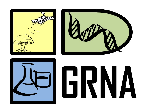Banca de DEFESA: LAURA FERNANDA DE LIMA LOBATO
Uma banca de DEFESA de MESTRADO foi cadastrada pelo programa.STUDENT : LAURA FERNANDA DE LIMA LOBATO
DATE: 11/02/2022
TIME: 09:00
LOCAL: Sala 113B, Bloco NSA na Unidade Tapajós - Acesso: https://meet.google.com/ubd-xxmv-bsu
TITLE:
POPULATION STRUCTURE AND DENDROMETRIC GROWTH OF Bertholletia excelsa IN TIMBER FOREST
MANAGEMENT AREA
KEY WORDS:
Tapajós National Forest, Brazil nut population, Non-timber Forest Product.
PAGES: 49
BIG AREA: Outra
AREA: Ciências Ambientais
SUMMARY:
Among so many animal and plant species found in the Amazon, the chestnut tree (Bertholletia excelsa Bompl.) stands out, belonging to the Lecythidaceae family and producing a non-timber forest product called Brazil nuts. The aim of this study was to investigate the population structure and dendrometric growth of populations of B. excelsa established in two management areas in the Tapajós National Forest (FLONA). The measurements and data for this research come from a managed area (AM) and an unmanaged area (NM), both located at Km 117 of the BR163. Data related to the entrance of light in forest environments were collected in order to prove the effects of forest management on the forest cover with LIDAR (Light Detection and Ranging) equipment and spherical densiometer. To assess the growth of the species over time, dendrometric data were collected for one year, in addition to measurements derived from previous inventories. In addition, information on termite infestation in the monitored trees was collected and the inventoried chestnut trees that had been found dead during the data collection work in both areas were noted. There were no differences in the vertical structure of the forest (plant cover, light incidence, forest height and leaf area index) between the two areas. The two Brazil nut populations (managed and unmanaged area) had a similar population structure with domain of intermediate diameter classes and with the only difference being the density of trees (almost five times greater in the managed area). The mean diameter of B. excelsa trees was significantly larger in the managed area, in contrast, the crown area was significantly larger in the unmanaged area. The degree of canopy infestation by vines was similar in the two populations of B. excelsa, noting that 37.5% (unmanaged area) and 40.4% (managed area) did not have their canopies infested with vines. The mortality rate for Brazil nut trees was low, with no record of differences between the two collection areas (0.17% per year, unmanaged area; 0.23% per year, managed area). The dendrometric growth in the managed area was significantly higher than in the unmanaged area, that is, apparently, the management benefited the Brazil nut tree growth, probably due to the decrease in interspecific competition with large trees and greater access to solar radiation.
BANKING MEMBERS:
Interna - 1178274 - PATRICIA CHAVES DE OLIVEIRA
Presidente - 1796322 - RICARDO SCOLES CANO
Externo à Instituição - ROGÉRIO GRIBEL - INPA
Externo ao Programa - 1776327 - THIAGO ALMEIDA VIEIRA




